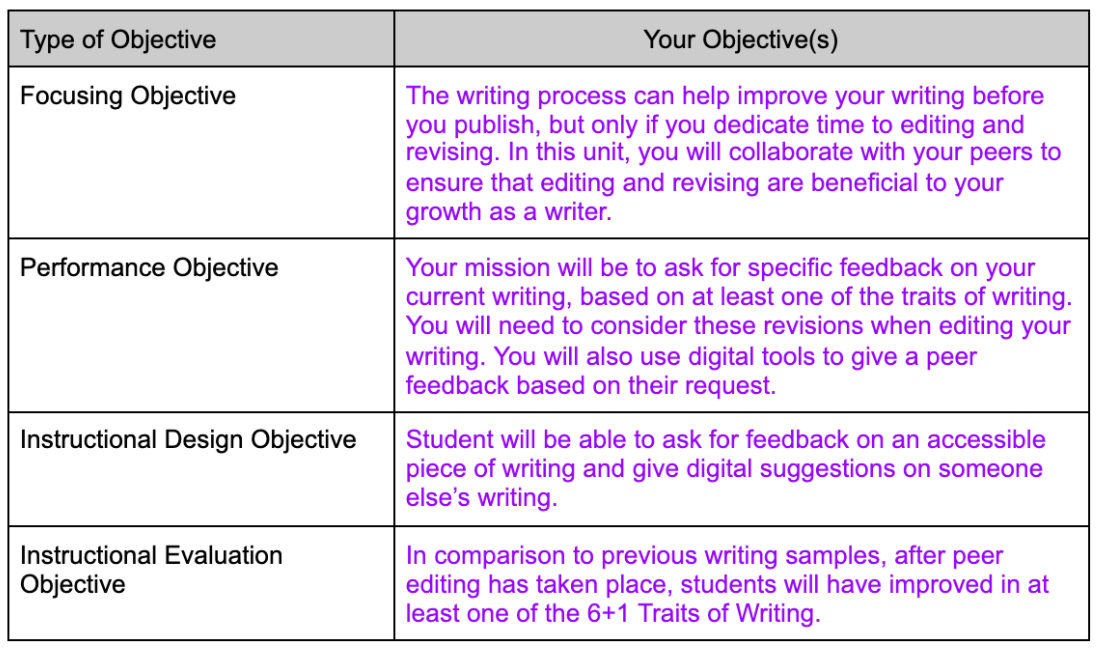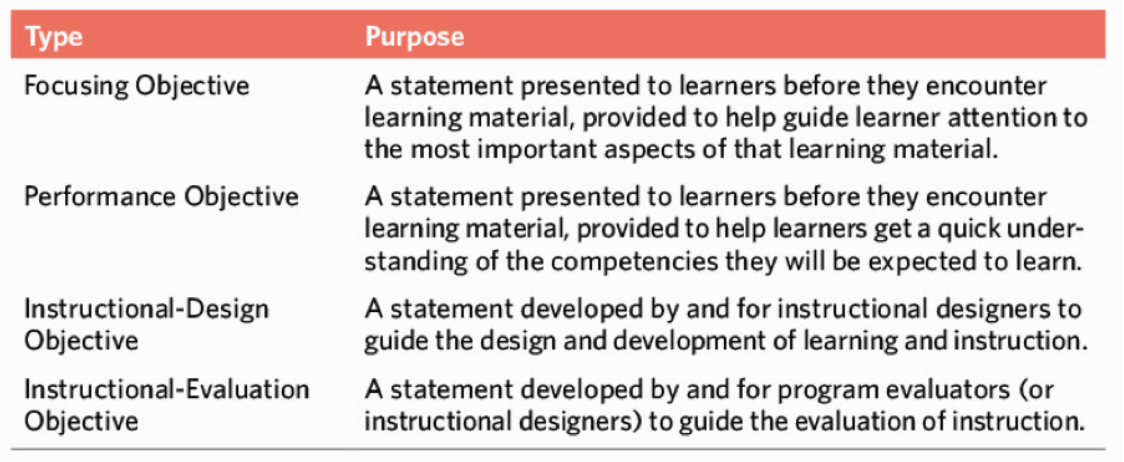Context
In one of my classes for my Master of Arts in Learning, Design, and Technology (MALDT), I am taking 16 weeks to design (and redesign, and change, and tweak) one lesson really well. We are working through a design cycle as we create this lesson. This is a reflection of my second step - Define (learning goals). You can follow more of my MALDT Progress here.
How I Decided to Word the Goals
After reviewing my school’s Writing Process Standards, I thought more about what the problem was that I wanted to solve. My students often do not edit their work well, or they quickly skim through this step of the writing process. Then I thought about where I wanted the students to be at the end of the lesson. I want students to have improved their writing in at least one of the 6+1 Traits of writing. I would expect that my students would apply conscious action when carrying out the revise/edit stage of the writing process. They would be consciously using the tools and procedure provided in the lesson to do this thoroughly.
After reflecting on these things, I started to form a focusing objective, a performance objective, an instructional design objective, and an instructional evaluation objective. How I Edited the Goals
In order to make these objectives as specific as possible, I continued to refer to the original proble, destination, and the gap inbetween. I also compared them to the definition and examples in Design for How People Learn by Julie Dirksen (the taxonomy of these types of learning objectives is originally from Thalheimer 2006).
Thinking through these four types of objectives helped me to form one, overarching smart goal for the lesson.
Final SMART Learning Goal: Students will use collaborative, online tools to seek, receive, and provide feedback on writing, based on one of the 6+1 Traits of Writing. Improvements will be made during the revise/edit stage of the writing process, resulting in an improved version of the piece before publishing.
I also made some changes to the original Google Sheet for students to add to. Thinking through the different objectives helped me to change some instructions.
Thinking Deeper About Lesson Goal Setting
Often objectives and goals are presented in boring or pointless ways. I enjoyed reading about these four different types of objectives that at least help the lesson designer create something with purpose. I think the most important thing to remember is how to find, and stay true to, that purpose. What is your problem? What is your destination? What is the gap between that, and how will your learners get there?
Better Goals for Lessons in the Future
While this would be an arduous task to complete for every lesson one teaches, it was definitely a process worth going through. In the future, it could be worth looking through the four different types of learning objectives for units, check-in assessments, tasks that are assessment as learning, or lessons like the one I am preparing, which could be used all year long and consistently referred to. Thinking through each of the four types and narrowing down what you actually want the students to focus on and what you want from them was valuable. I also believe that working through this process would probably become a lot quicker and easier the more you do it.
2 Comments
Chandrani Banerjee
2/20/2021 08:23:31 pm
So well explained. I love reading your post. But this one is one of a kind. I was practising design thinking since 2 years,however your post have few points worth reading.
Reply
Justin Ouellette
3/23/2021 03:43:44 am
As usual, I love your posts. I'm doing a little inquiry into links within comments on Weebly.
Reply
Your comment will be posted after it is approved.
Leave a Reply. |
Cindy KaardalThis blog page is specifically for my COETAIL blog posts. Archives
April 2021
Categories
All
|






 RSS Feed
RSS Feed